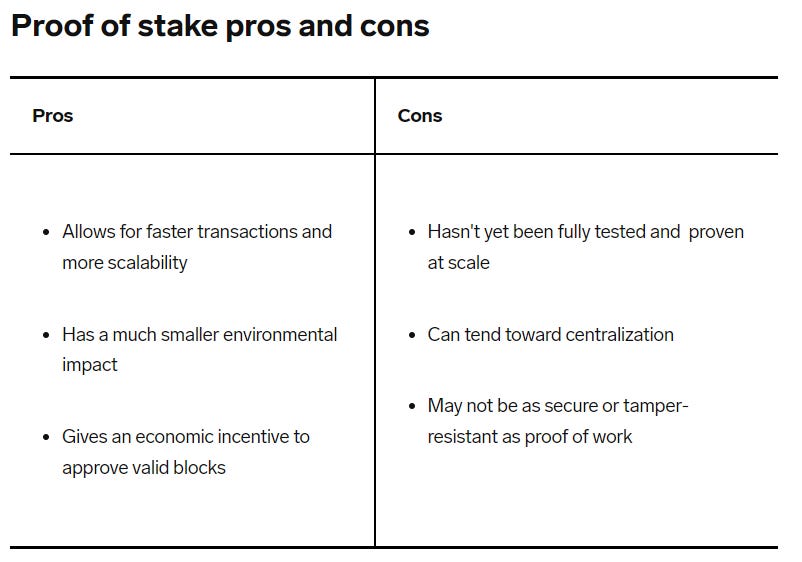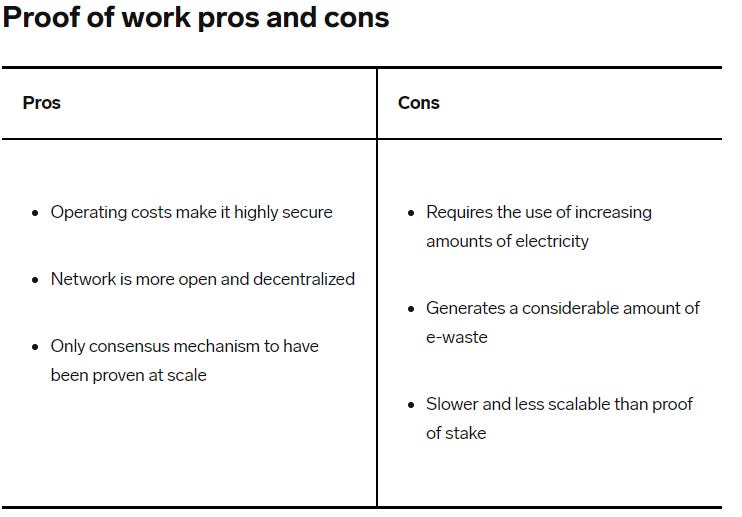Polkadot - The Future Biggest Competitor of Ethereum
DOT and ETH are tokens that fuel their own chains. Due to price increases and excitement surrounding their projects, both tokens have become extremely popular. They let users collaborate on projects and process transactions, and their chains are both working to increase the usability of cryptocurrency, albeit in different ways.
Polkadot vs Ethereum - POW vs POS
The two tokens used different methods of verification as of October 2021. Polkadot verifies transactions using a proof of stake system. Validators in a proof-of-stake system lock up currency in exchange for the chance to verify transactions and get block rewards. Individuals might lose control of their investment while it is staked under this arrangement, so this system is the best method to aid in the prevention of fraudulent behavior.
Proof of stake achieves consensus by requiring participants to stake crypto behind the new block they want to add to a cryptocurrency's blockchain. Proof of work, on the other hand, achieves consensus by compelling users to expend computing effort, and electricity in order to construct a new valid block.
Ethereum relies on proof of work to execute transactions. Proof of work is a method of verifying transactions by utilizing computing power. Computers compete to answer challenging arithmetic problems in order to receive block rewards. The rewards are distributed based on the number of arithmetic problems performed.
Proof of work has the virtue of making it extremely difficult to attack a cryptocurrency's network, but it comes at an increasing environmental cost. While proof of stake avoids the large energy consumption associated with proof of work, it has not been demonstrated to be as safe and reliable at scale as proof of work. Actually, this method consumes a tremendous amount of energy. As a result, Ethereum transitioned to 2.0 on September 25, 2022.
Each token is distinct in its own respect. Polkadot's goal is to link chains, while Ethereum's goal is to create a secure public blockchain for high-value transactions. In terms of adoption, we may say that Ethereum is the clear winner. It now has many more practical users.
DOT, on the other hand, may offer greater potential. It is a newer coin that has already witnessed significant price leaps. In terms of market capitalization, DOT likely has more room to grow. This might be the beginning of something bigger and has the potential to dominate the future of the crypto industry.
Why could Polkadot become the biggest competitor of Ethereum in the future?
First, Polkadot was the most profitable cryptocurrency in 2020. Furthermore, the network's affiliation with Ethereum co-founder Gavin Wood - the British computer scientist who proposed Polkadot in 2017 - and the large capital raised in its initial coin offering in 2017 were factors towards its rise as a blockchain platform.
Polkadot is seen as a promising blockchain that has the potential to supplant Ethereum's supremacy. Polkadot's progress has prompted some to speculate if it would someday replace or dominate Ethereum. It should be noted that some of the challenges that Polkadot attempted to tackle are the same ones that Ethereum 2.0 has just improved to be able to solve.
The use of a proof-of-stake consensus algorithm and the BABE protocol, both developed from Ouroboros, has the potential to improve network efficiency. It is crucial to highlight that, while the notion of interoperability is not new, the exact implementation in Polkadot is unique, which has piqued the blockchain community's curiosity.
Furthermore, Polkadot is a next-generation blockchain technology that connects several specialized blockchains into a single unified network. Built as part of a broad vision for a web that allows people control over internet monopolies. The EIP-1559 upgrade was poised to go live, overhauling Ethereum's fee structure and potentially making it a deflationary asset.
Polkadot is a new blockchain platform that takes a novel approach to interoperability between different blockchain networks. The Polkadot Network features sophisticated topologies, and its usage of a relay chain and parallel chains known as "parachains" enables independent projects to establish and manage their own blockchains within the Polkadot infrastructure. In comparison to previous initiatives, this strategy may result in higher scalability and flexibility. Polkadot also has an auction method for determining which projects can host dApps on Parachains.
Polkadot - A rapid growth in terms of developer adoption
According to Electric Capital Report, Polkadot is seeing a considerable rise in developer usage. Polkadot, according to the research, is one of the most active blockchain ecosystems for developers.
With the number of developers on these projects now exceeding 1000, it is clear that the future of blockchain technology is bright and that these projects are at the forefront of this growth.
The foundation builds with top-class technologies, architecture, and mechanisms for the next wave of Blockchain-based Gaming.


0 comments